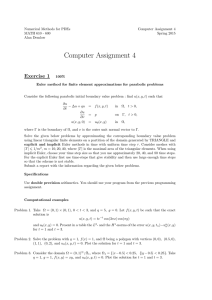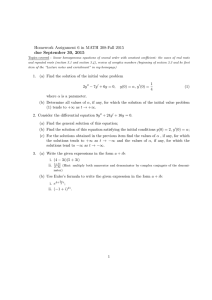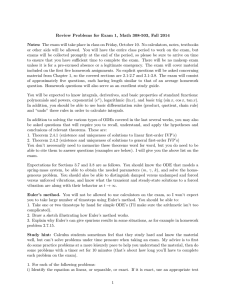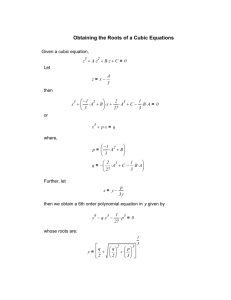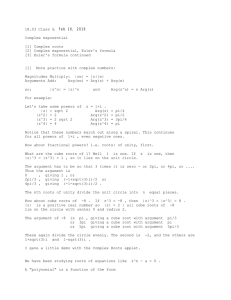REVIEW SHEET FOR MIDTERM #1 MATH 2280-2 1. Theory
advertisement
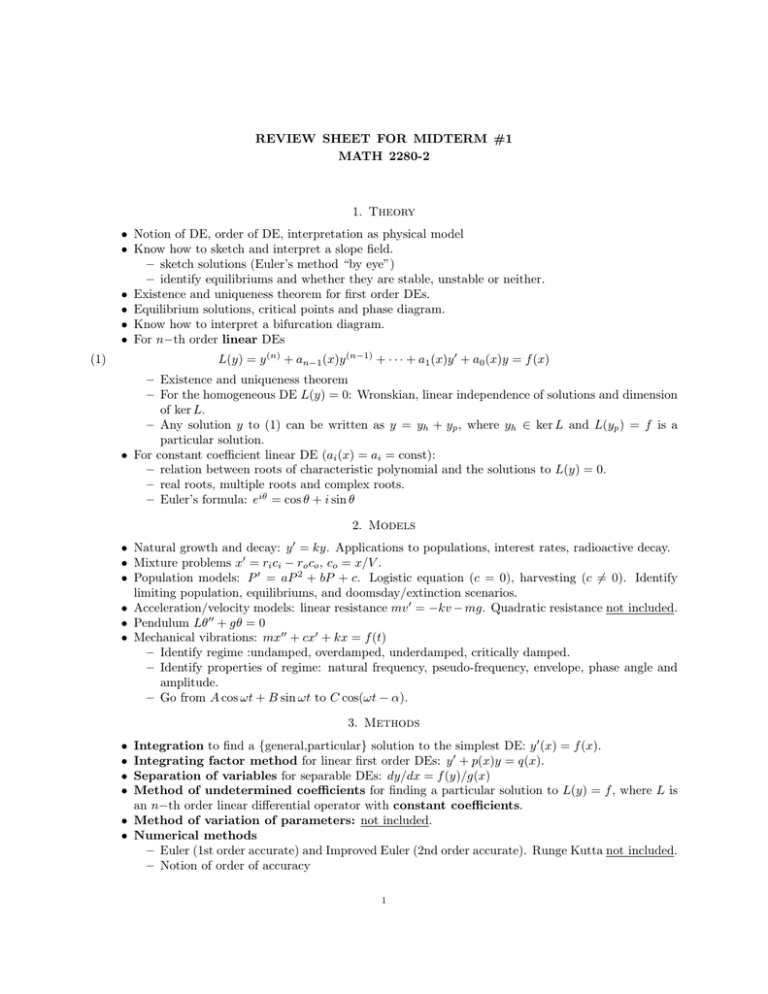
REVIEW SHEET FOR MIDTERM #1
MATH 2280-2
1. Theory
• Notion of DE, order of DE, interpretation as physical model
• Know how to sketch and interpret a slope field.
– sketch solutions (Euler’s method “by eye”)
– identify equilibriums and whether they are stable, unstable or neither.
• Existence and uniqueness theorem for first order DEs.
• Equilibrium solutions, critical points and phase diagram.
• Know how to interpret a bifurcation diagram.
• For n−th order linear DEs
L(y) = y (n) + an−1 (x)y (n−1) + · · · + a1 (x)y 0 + a0 (x)y = f (x)
(1)
– Existence and uniqueness theorem
– For the homogeneous DE L(y) = 0: Wronskian, linear independence of solutions and dimension
of ker L.
– Any solution y to (1) can be written as y = yh + yp , where yh ∈ ker L and L(yp ) = f is a
particular solution.
• For constant coefficient linear DE (ai (x) = ai = const):
– relation between roots of characteristic polynomial and the solutions to L(y) = 0.
– real roots, multiple roots and complex roots.
– Euler’s formula: eiθ = cos θ + i sin θ
2. Models
• Natural growth and decay: y 0 = ky. Applications to populations, interest rates, radioactive decay.
• Mixture problems x0 = ri ci − ro co , co = x/V .
• Population models: P 0 = aP 2 + bP + c. Logistic equation (c = 0), harvesting (c 6= 0). Identify
limiting population, equilibriums, and doomsday/extinction scenarios.
• Acceleration/velocity models: linear resistance mv 0 = −kv − mg. Quadratic resistance not included.
• Pendulum Lθ00 + gθ = 0
• Mechanical vibrations: mx00 + cx0 + kx = f (t)
– Identify regime :undamped, overdamped, underdamped, critically damped.
– Identify properties of regime: natural frequency, pseudo-frequency, envelope, phase angle and
amplitude.
– Go from A cos ωt + B sin ωt to C cos(ωt − α).
3. Methods
Integration to find a {general,particular} solution to the simplest DE: y 0 (x) = f (x).
Integrating factor method for linear first order DEs: y 0 + p(x)y = q(x).
Separation of variables for separable DEs: dy/dx = f (y)/g(x)
Method of undetermined coefficients for finding a particular solution to L(y) = f , where L is
an n−th order linear differential operator with constant coefficients.
• Method of variation of parameters: not included.
• Numerical methods
– Euler (1st order accurate) and Improved Euler (2nd order accurate). Runge Kutta not included.
– Notion of order of accuracy
•
•
•
•
1


